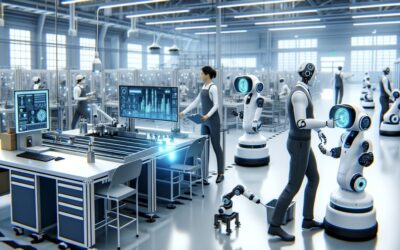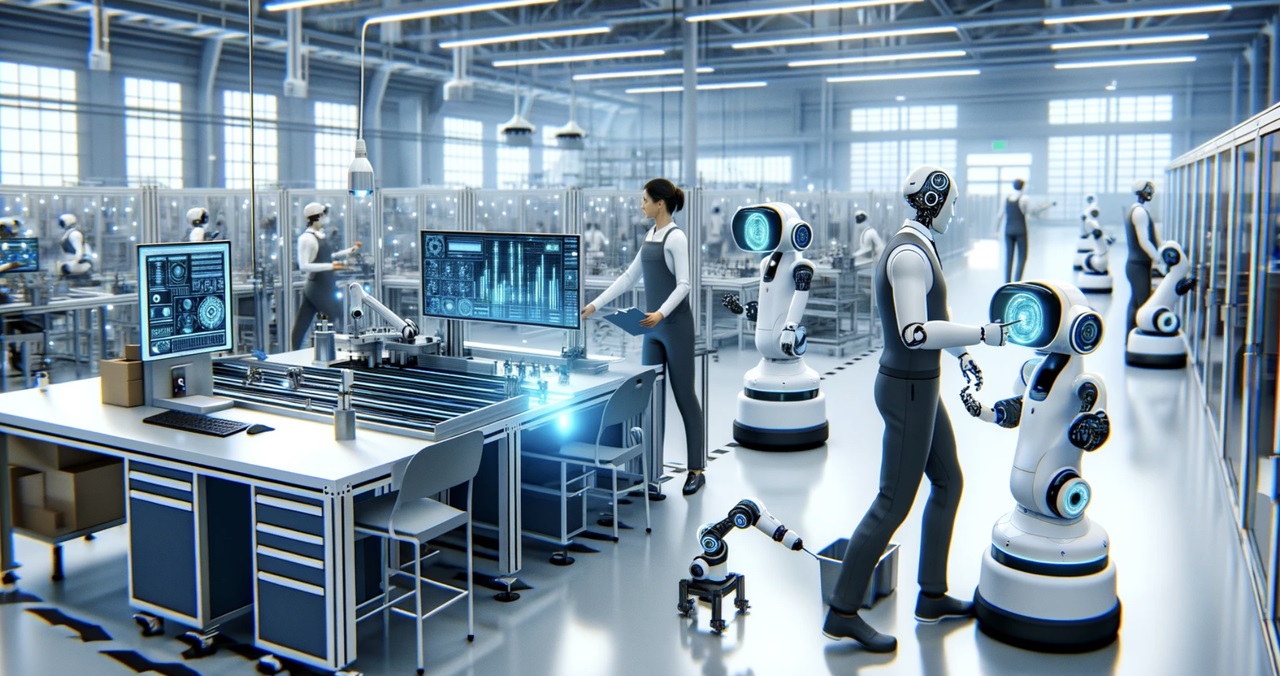In today’s rapidly evolving technological landscape, the integration of collaborative robots, or cobots, into various industries is becoming increasingly prevalent. Unlike traditional industrial robots, cobots are designed to work alongside humans, assisting with repetitive tasks and enhancing productivity. One key aspect that sets cobots apart is their ability to continuously learn and adapt to changing environments and requirements over time. In this article, we delve into the intricacies of continuous learning in cobots, exploring the strategies, challenges, and implications associated with this dynamic process.
Understanding Continuous Learning in Cobots
At the heart of a cobot’s functionality lies its capacity for continuous learning. This refers to the ability of cobots to acquire new knowledge and skills autonomously, enabling them to perform tasks more effectively and efficiently. There are several types of continuous learning algorithms employed in cobots, each tailored to specific applications and objectives.
Types of Continuous Learning Algorithms
Supervised Learning: In supervised learning, cobots are trained on labelled datasets, where the correct output is provided for each input. Through this process, cobots learn to map input data to desired outputs, allowing them to make predictions or decisions based on new, unseen data.
Unsupervised Learning: Unsupervised learning involves training cobots on unlabelled data, without explicit guidance on the correct output. Instead, cobots learn to identify patterns and structures within the data, enabling them to uncover insights and make informed decisions without human intervention.
Reinforcement Learning: Reinforcement learning is a dynamic learning paradigm where cobots learn by interacting with their environment and receiving feedback in the form of rewards or penalties. Through trial and error, cobotsoptimize their behaviour to maximize cumulative rewards, adapting their actions over time to achieve desired objectives.
Factors Influencing Continuous Learning in Cobots
The quality and quantity of data available for training significantly impact the learning capabilities of cobots. High-quality data, free from errors and biases, ensures that cobots can learn accurate representations of their environment and tasks. Additionally, a diverse and extensive dataset allows cobots to generalize their learning and adapt to a wide range of conditions and scenarios.
The computational resources available to cobots, including processing power and memory capacity, determine their ability to handle complex learning tasks. Advanced hardware accelerators, such as GPUs and TPUs, enable cobots to train and deploy sophisticated machine learning models efficiently, facilitating faster learning and adaptation. For more information on cobots and their adaptive capabilities, consider exploring Flexibowl.
Strategies for Adapting Cobots’ Functions Over Time
One approach to facilitating continuous learning in cobots is through modular design principles. By decomposing complex tasks into smaller, modular components, cobots can learn and adapt each component independently, allowing for greater flexibility and scalability. Modular architectures also facilitate the integration of new sensors, actuators, and learning algorithms, enabling cobots to evolve over time without significant reconfiguration.
Transfer learning is a powerful technique that allows cobots to leverage knowledge and skills acquired from one task or domain to another. By pre-training cobots on a related task with a large dataset, and then fine-tuning the model on the target task with a smaller dataset, transfer learning enables rapid adaptation to new tasks and environments. This approach is beneficial in scenarios where collecting labelled data for training is challenging or impractical.
Tools and Technologies for Implementing Continuous Learning in Cobots
High-quality sensor technologies are essential for capturing accurate and reliable data for training cobots. Vision sensors, such as cameras and depth sensors, provide rich visual information about the environment, while other sensors, such as LiDAR, radar, and inertial sensors, offer complementary modalities for perception and localization. Integrating diverse sensor modalities enables cobots to obtain a comprehensive understanding of their surroundings, facilitating robust and adaptive behaviour.
Simulation environments play a crucial role in training and validating cobot algorithms in a safe and controlled manner. By simulating realistic scenarios and environments, developers can iteratively refine and optimizecobotbehaviours without risking damage to physical hardware or endangering human operators. Simulation platforms, such as Gazebo, Unity3D, and Unreal Engine, provide powerful tools for building custom environments and testing cobot algorithms under various conditions.
Ethical Considerations and Challenges
The proliferation of sensors and data collection mechanisms in cobots raises concerns about the privacy and security of sensitive information. As cobots gather and process data from their surroundings, it is essential to implement robust data encryption, access controls, and anonymization techniques to protect the privacy of individuals and organizations. Additionally, clear guidelines and regulations are needed to govern the collection, storage, and use of data by cobots, ensuring compliance with data protection laws and regulations.
Machine learning algorithms employed in cobots are susceptible to biases and unfairness, which can lead to discriminatory outcomes and unintended consequences. Bias may arise from skewed training data, algorithmic biases, or implicit assumptions embedded in the learning process. To mitigate these risks, developers must employ techniques such as data augmentation, fairness-aware learning, and bias mitigation strategies to ensure that cobots make fair and equitable decisions across diverse populations and demographics.
Conclusion
Continuous learning is at the core of a cobot’s ability to adapt and evolve its functions over time, enabling it to perform a wide range of tasks with precision and efficiency. By leveraging advanced machine learning techniques, robust algorithms, and powerful hardware, cobots can learn from experience, adapt to changing environments, and collaborate effectively with human partners. However, as cobots become more autonomous and ubiquitous, it is essential to address ethical considerations, regulatory challenges, and societal impacts to ensure responsible and equitable deployment.














